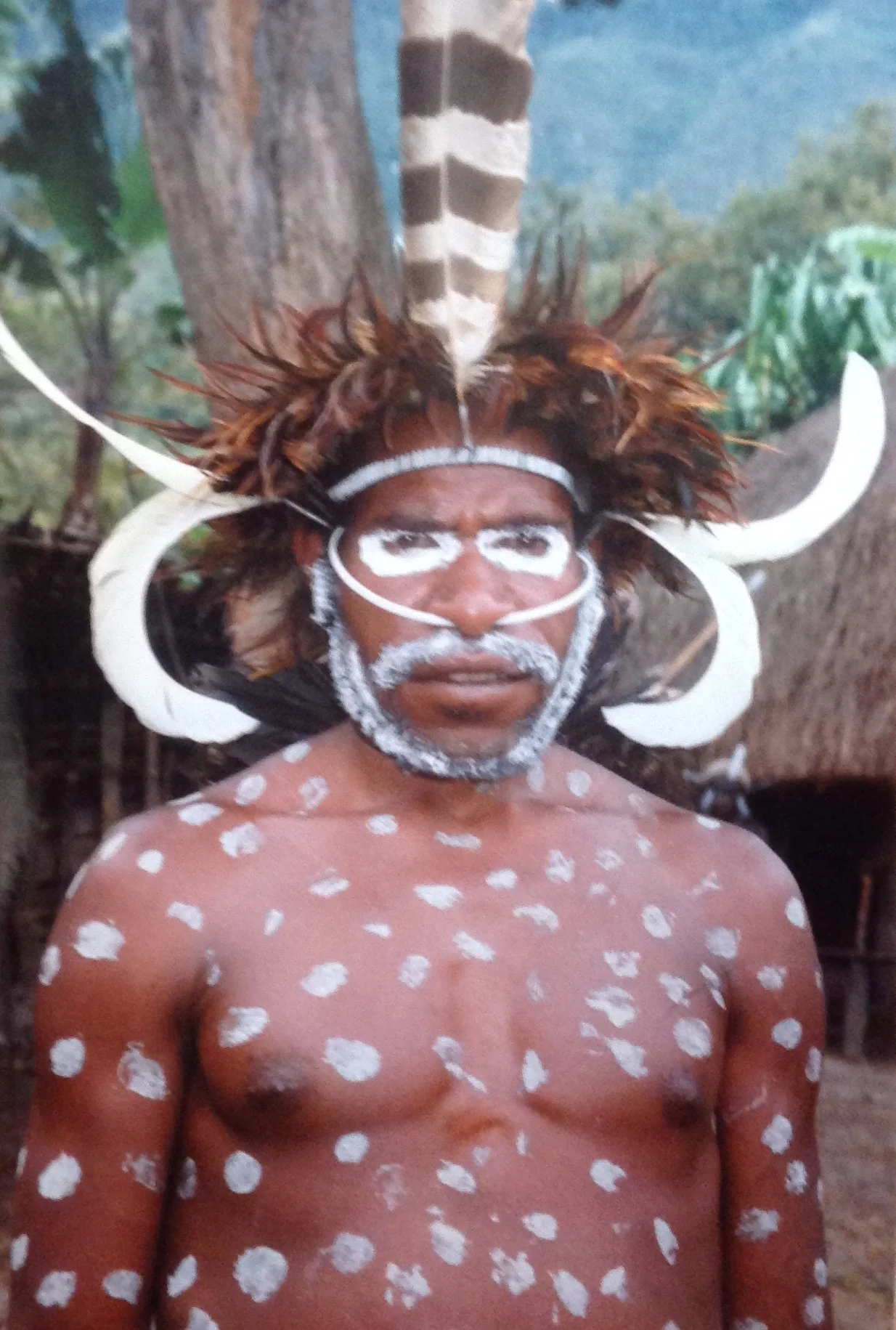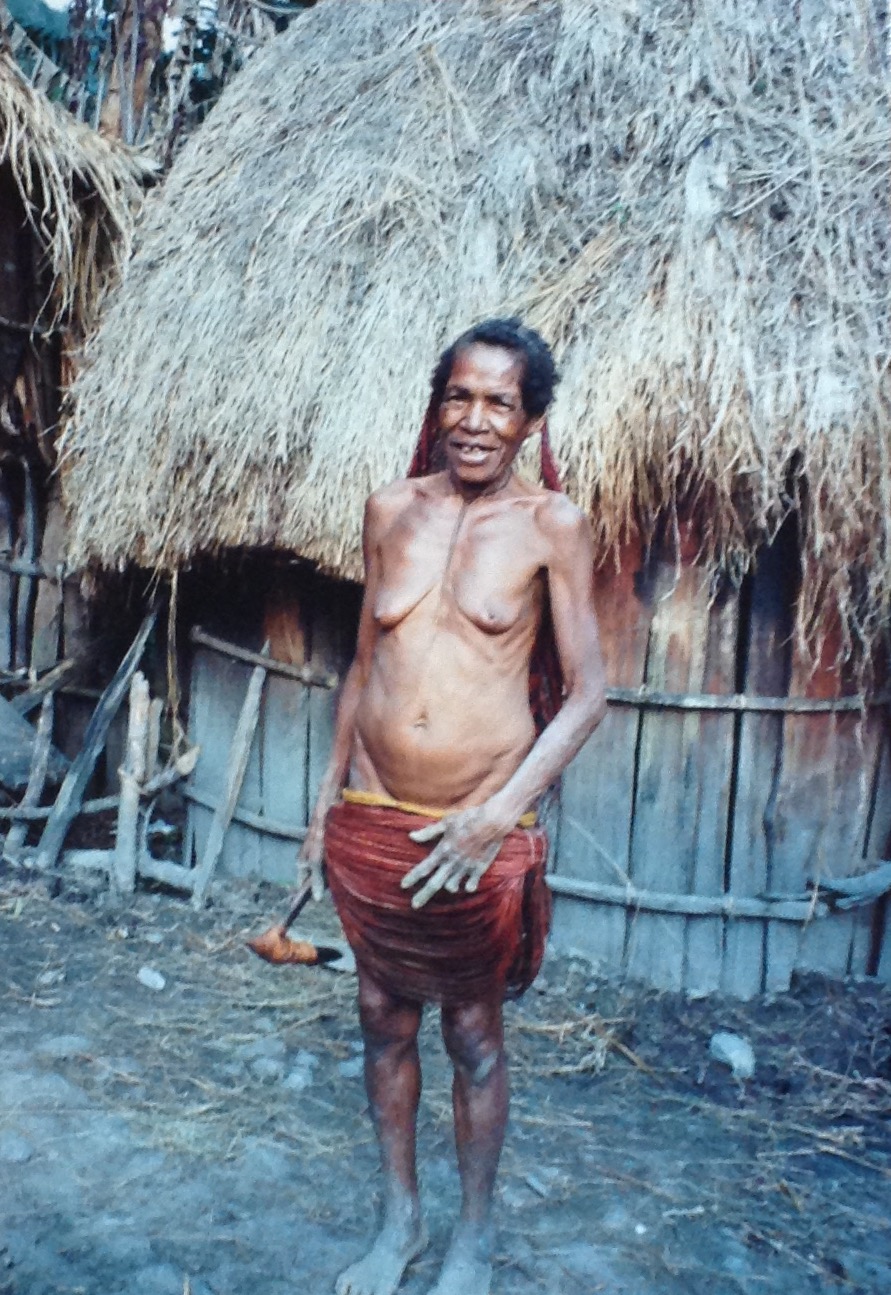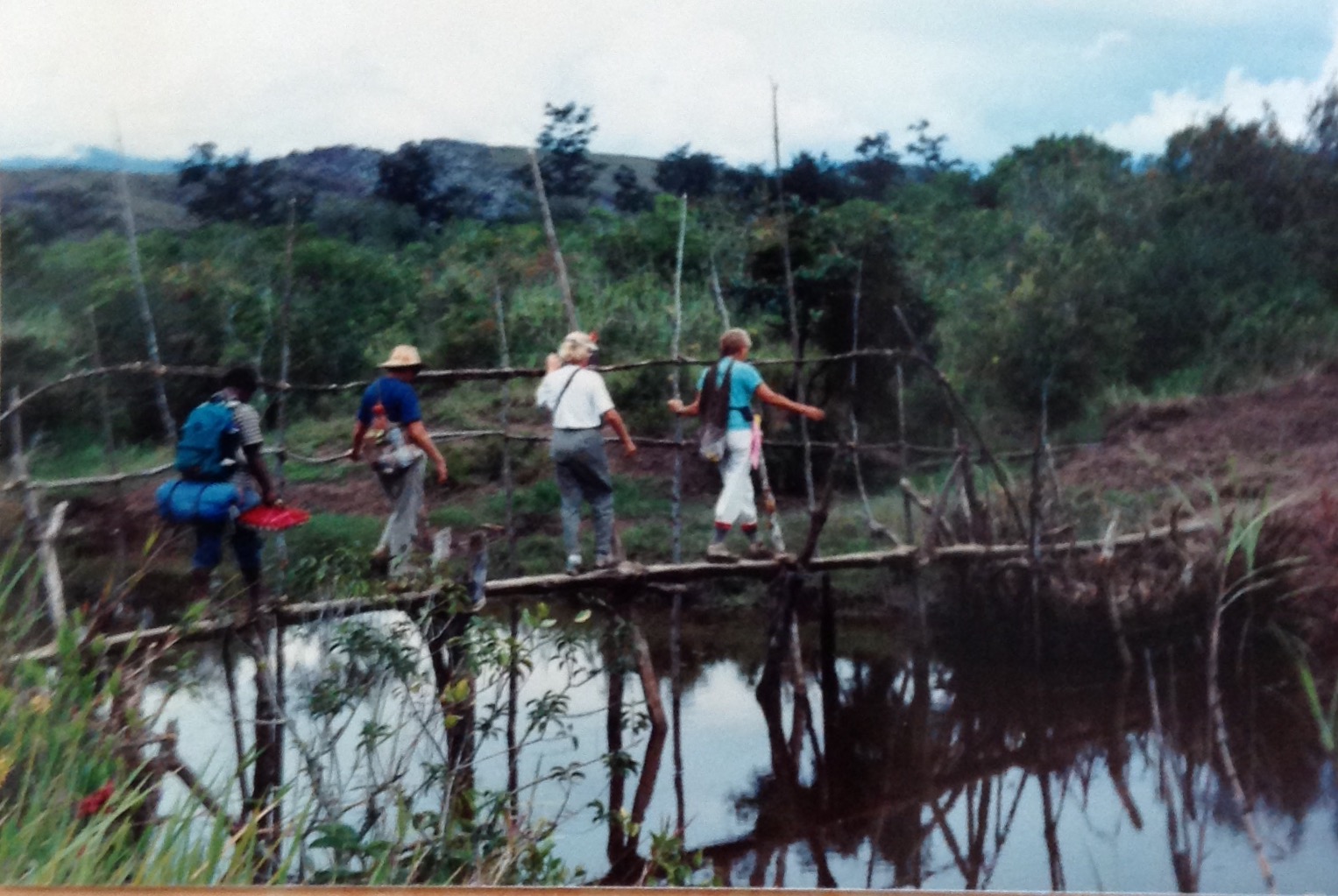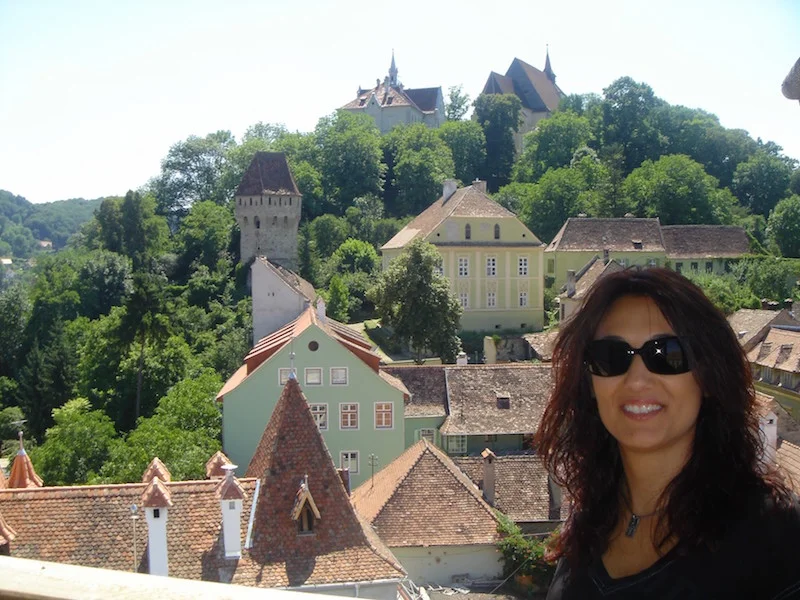Trekking Into The Stone Age
by Barbara Brown Allen
Climbing into the small twin engine plane ready for take off, I was both excited and anxious. Excited because my lifelong goal of trekking in the remote, isolated mile high Baliem Valley of Irian Jaya would soon become reality. Anxious because the indigenous Dani people living there were described in a National Geographic article I read years ago as “a Stone Age civilization of cannibalistic, ancestor worshipping warriors on the edge of change”. Now fifty years later as a seasoned traveler with many treks behind me, I wonder how much the valley and the Dani have changed.
Once in the air we quickly left civilization behind and were flying over a vast green impenetrable rainforest. Slowly curving southward and gaining altitude, we entered a thick cumulus cloud cover blanketing the 10,000 foot jagged peaks of the Snow Mountains. Unable to see anything out my window other than clouds, my anxiety returned. Will the Dani be as fierce and warlike as I’d read? Would they welcome us to their villages? Would they eat us?
A reminder from the pilot to fasten our seat belts and my anxiety faded. We flew out of the clouds and slipped through a narrow pass in the rough jagged peaks of the escarpment. Just as described by the first explorers I saw below the muddy Baliem River meandering through a checkerboard landscape of lush sweet potato fields divided by muddy irrigation ditches, and dotted with thatch roofed villages bustling with activity.
Excited again as the plane came to a stop on the packed dirt runway, I grabbed my backpack and quickly exited the plane. Standing by the uniformed airport official was Thony, the young Dani who was to be our trekking guide. Handing him the travel passes we needed to enter the valley, he quickly cleared us with the airport official and suggested we walk to the nearby village of Wamena and buy provisions for our trek.
Heading down the runway which shortly became the road, a ramshackle building soon came into view with rough wooden tables piled high with old iron tools, dusty furred and feathered headdresses, wicked looking weapons and huge mounds of sweet potatoes, banana stalks and other unfamiliar foodstuff. As we entered the marketplace the smells and sounds were fascinating and yet overwhelming. Squealing piglets, barking feral dogs and countless small brown frizzy haired children ran under, around and over the mounds of merchandise. Bare breasted young women in short grass skirts and older women with stiff oval vine skirts covering little in front and hanging perilously low under their buttocks shared the aisles with us. All carried multiple woven net bags called “nyoken” slung over their heads and hanging down their backs.
Our eyes were drawn to a group of nearly naked Dani tribesmen wandering outside the market. Their muscular black bodies glistened with pig fat and all wore the traditional penis gourd or “horim” tied around their middle. Large curving boar tusks protruded from each nostril and most wore towering furred and feathered headdresses. They definitely looked ferocious but happily within minutes a few approached with gentle handshakes and murmured “La-uk, La-uk “ (welcome, welcome).
Reluctantly leaving the crowded market we followed Thony back down Runway/ Highway #1 in the opposite direction. The one lane dirt road soon ended and we walked single file along a narrow trail along the slippery top of irrigation ditches through a maze of sweet potato fields. Several brushy fields and banana groves later we reached the wide Baliem river. Our destination was, of course, on the other side of the river. Getting across the 100’ long wooden slat and vine suspension bridge before us would be our first test. Hesitating and hoping someone else would go first, I glanced across the river and running across the now wildly swaying bridge were several Dani boys. The first one hopped off the bridge, slung my backpack over his shoulder, held out his hand and coaxed me over the first of many stick and vine bridges l’d face over rushing water or deep rocky ravines.
Hurrying along now with the Dani carrying our bulging backpacks, we climbed countless hills, splashed through creek after creek, and hesitantly inched over more stick bridges. Just before dark we were met by Chief Yuli who led us up and over the rough log entrance stile into his U-shaped village surrounded by a double fence of sharp pointed sticks and a muddy moat. Across the open clearing sat a large, 2 story thatched hut or “honai” where all the men slept, ate, smoked and talked around a central smoldering fire. Adolescent boys climbed to the loft for sleeping. Along one side were 6 small round huts for the women, children and their pigs. Opposite was a long shed covered by a raised roof where each family had a separate cooking area. Thony stopped here to fix our supper of sweet potatoes and soup while the chief led us to a large clean hut where we spread our sleeping bags. Surprisingly all was quiet in the village….I guessed that Dani farmers were early to bed and early to rise just as everywhere else in the world.
Stumbling outside the next morning into surprisingly cold, misty weather and making my way over the slippery entrance stile to the outhouse, I silently thanked Chief Yuli for this recently built convenience for trekkers. Last night’s quiet cooking shed was now a hive of activity as we entered. Dani women were busy building fires and roasting sweet potatoes for their breakfast and ours! Shy little girls in tiny grass skirts huddled next to their mothers and rascally little boys with “horim” askew ran wildly from one fireplace to another. All eyes were fixed on us. Hoping to break the uncomfortable silence I pulled out a bottle of bubble soap I always carry. Soon all the children and many mothers joined me blowing bubbles and were now not so afraid of us.
Leaving Analagak village we shared the footpath with women going to the fields carrying sharp pointed digging sticks over one shoulder and countless nyoken slung over their backs for warmth and for carrying piglets, babies, and/or sweet potatoes. Sleepy tribesmen passed us hurrying to the tall, lashed pole watchtowers bordering the fields. Here they would stand on high platforms to prevent an enemy stealing their pigs or assaulting their women. Thony explained Dani ritual warfare between enemies is forbidden by the government but still persists. His theory is that an occasional skirmish with pointed spears and inaccurate arrows diffuses the tribesmen’s build up of testosterone! Adding that Dani wars have never been for land or power over another village and seldom cause deaths.
As we stood watching the women soak banana leaves in a salt water spring an older woman wearing a faded cloth skirt rather than a grass one signaled that she wanted to trade with me….. her old discarded grass skirt for my hiking skirt. Handing her skirt to me, I noticed most of the fingers on her left hand were just stubs. In Dani culture when a relative dies, the family’s youngest female must sacrifice a finger joint to honor their ancestor. Thony says it is rare to find a woman with all the fingers on her left hand. Unable to imagine the pain this woman had suffered as a child not just once but time and again, it was impossible for me to withhold tears as we exchanged skirts.
Invited by Chief Yuli to a farewell feast before we left the valley, we were met again just outside the village fence. Dressed for the festivities in a special fur tasseled “horim”, a towering bird of paradise headdress, and a long cowrie encrusted bib, he motioned me to enter first. Hesitantly stepping over the entrance stile, a colorful chorus line of wild looking Dani shuffled toward me chanting and waving spears, bows and arrows over their heads. Many had decorated their legs and upper bodies with white paint. Three women in mourning had smeared yellow mud over their nakedness and danced wildly around the fire pit. As I stood in shocked silence, the crowd circled me, lifted me over their heads, carried me to the central fire pit and danced around the fire in what I hoped was mock fury. My trekking friends loved the show, but I wasn't so sure until they finally tired and deposited me in front of the “honai” and a laughing Chief Yuli.
As I look back on the experience no longer will I think of them as fierce warriors but as fellow human beings sharing with me the same fears, dreams, hopes and need for love. Though our cultures are different in many ways, we are much alike in our basic values.
Barbara Brown Allen is a traveler who got a late start but is making up with it on adventures, with friends, family, and alone, in some of the world’s most remote destinations.








